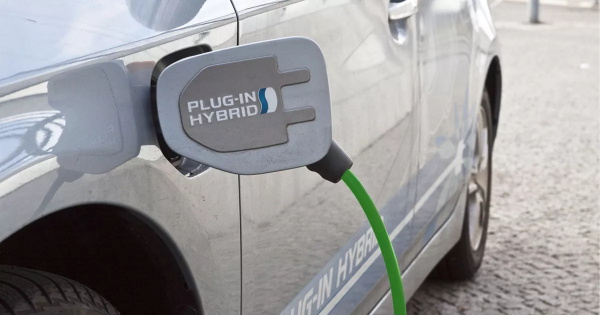With a modern plug-in hybrid, a purely electric driving range of up to 90 kilometers is possible. That’s usually enough for commuting to work or other daily travel. Nonetheless, the batteries of these PHEVs are significantly smaller than those of battery electric vehicles (BEVs). So, are household sockets good enough for everyday charging needs? Or do charging stations still make sense?

Safety is the main aspect - a charging station protects against overloading
If you’re using your PHEV’s electric-only range a lot — which is what owning a vehicle like this is all about — you’ll also want to charge it regularly. This puts a lot of load on the power lines and sockets, as charging at 2.3 kW for 5 hours is equivalent to running a radiant heater for the same amount of time. On the contrary, if using a wallbox, ensure that the cable construction is able to cope with this unusual load: installation by a professional company ensures, firstly, that the cable diameter is properly sized and, secondly, additional safety mechanisms protect the home grid. In addition, the charging station itself is protected against overloading. That means charging is absolutely safe – whether in a single-family home or an apartment complex.
Using a wallbox means higher charging power, ergo shorter charging times
Charges a plug-in hybrid with 2.3 kW using a standard 230 V, 10 A household socket. This means that with a battery capacity of 12 kWh, it takes about 5 hours to charge from 0% to 100% state of charge. This relatively long charging time is more than enough if the driving mode allows overnight charging. However, if you need to charge as quickly as possible between two long trips during the day, for example, you need a higher charging power. PHEVs can usually only be charged in single-phase mode, but at higher charging currents than are compatible with standard plug-in sockets: most plug-in hybrid models charge at 3.5 kW (230 V at 16 A), which Significantly reduced charging time for the example vehicle: from 5 hours to less than 3.5 hours. However, this is only possible with professional charging solutions such as wallboxes.

Prevention of unauthorised access, full cost transparency and ease of use
In shared garages, charging stations offer a further advantage: Wallboxes with user identification guarantee that only authorized personnel can charge. This is difficult to achieve with standard socket solutions. Additionally, a correspondingly capable wallbox is able to measure current and record charging data. This makes it possible, for example, to precisely quantify and bill electricity costs for plug-in hybrid vehicles used by companies without a separate electricity meter, or to determine consumption by individual consumers. Last but not least, a wallbox with a fixed charging cable offers a high level of convenience: cables and plugs don’t litter the floor and get dirty, and you don’t have to retrieve and put them away before each charge. up again. Just stop the power.
Fit for the future with a wallbox
Another positive aspect of the charging station is its versatility. Even though PHEVs can only be charged with a single phase and max out at 3.5 kW – wallboxes are usually designed for three-phase charging with at least 11 kW (and often even 22 kW). So if you decide to buy a pure battery electric vehicle after purchasing a plug-in hybrid, you can also use your existing wallbox to charge it. This eliminates the need for a new charging unit to be installed in the carport or garage.
Start Your EV Charging Business With Kelylands Today!
Simply Fill Out Your Details And We’ll Give You A Call To Discuss The Right EV Chargers For Your Charging Needs.
